995 scholarly books by The Institution of Engineering and Technology and 69
have author last names that start with S
995 scholarly books by The Institution of Engineering and Technology and 69
995 scholarly books by The Institution of Engineering and Technology
69 have author last names that start with S have author last names that start with S
69 have author last names that start with S have author last names that start with S

Variable Structure Systems
From principles to implementation
Asif Sabanovic
The Institution of Engineering and Technology, 2004
Variable structure systems, or sliding mode control systems, are non-linear automatic control systems whose structures are deliberately allowed to change, so that robust performance is obtained. It allows the design of high performance control systems that can be reliably and easily implemented at low cost. Although the basic theory is mature, the theory and the associated control system design methodologies are less well known to many control engineers. This new text seeks to redress the gap, and is split into three parts: the basics of sliding mode control, new trends in sliding mode control and applications of sliding mode control.
[more]
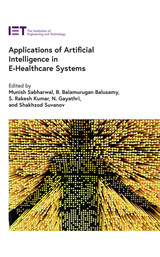
Applications of Artificial Intelligence in E-Healthcare Systems
Munish Sabharwal
The Institution of Engineering and Technology, 2022
Increased use of artificial intelligence (AI) is being deployed in many hospitals and healthcare settings to help improve health care service delivery. Machine learning (ML) and deep learning (DL) tools can help guide physicians with tasks such as diagnosis and detection of diseases and assisting with medical decision making.
[more]
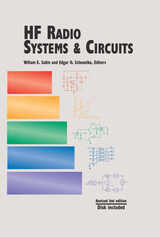
HF Radio Systems and Circuits
William E. Sabin
The Institution of Engineering and Technology, 1998
A comprehensive reference for the design of high frequency communications systems and equipment. This revised edition is loaded with practical data, much of which cannot be found in other reference books. Its approach to the subject follows the needs of an engineer from system definition and performance requirements down to the individual circuit elements that make up radio transmitters and receivers.
[more]
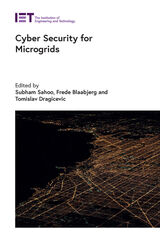
Cyber Security for Microgrids
Subham Sahoo
The Institution of Engineering and Technology, 2022
Microgrids use ICT to intelligently deliver energy and integrate clean generation. They can operate independently from a larger grid and can help to strengthen grid resilience. Applications include remote as well as urban areas, hospitals, and manufacturing complexes. Cybersecurity challenges arise, exposing the microgrids to cyber-attacks, possibly resulting in harm to infrastructure and to people. Research has classified attacks based on confidentiality, integrity, and availability, and most countermeasures focus on specific attacks or on protecting specific components. A global approach is needed combining solutions that can secure the entire system and respond in milliseconds.
[more]
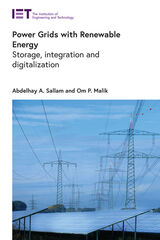
Power Grids with Renewable Energy
Storage, integration and digitalization
Abdelhay A. Sallam
The Institution of Engineering and Technology, 2021
Generation of electricity from renewable sources has become a necessity, particularly due to environmental concerns. In order for renewable sources to provide reliable power, their sporadic availability under certain conditions and the lack of control over the resource must be addressed. Different renewable energy sources and storage technologies bring various properties to the table, and power systems must be adapted and constructed to accommodate these. Power electronics and micro-grids play key roles in enabling the use of renewable energy in the evolving smarter grids.
[more]
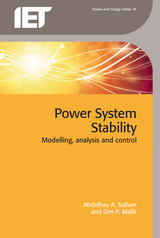
Power System Stability
Modelling, analysis and control
Abdelhay A. Sallam
The Institution of Engineering and Technology, 2015
To ensure stable operation of a power system, it is necessary to analyse the power system performance under various operating conditions. Analysis includes studies such as power flow and both steady-state and transient stability. To perform such studies requires knowledge about the models used to represent the various components that constitute an integrated power system. In situations where there is a risk of loss of stability, it is necessary to apply controls that can ensure stable and uninterrupted supply of electricity following a disturbance.
[more]
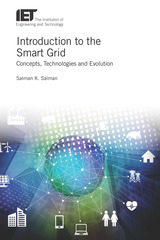
Introduction to the Smart Grid
Concepts, technologies and evolution
Salman K. Salman
The Institution of Engineering and Technology, 2017
In recent years it has become increasingly apparent that conventional electrical networks cannot meet the requirements of the 21st century. These include reliability, efficiency, liberalisation of electricity markets, as well as effective and seamless integration of various types of renewable energy sources, electric vehicles, and customers as players. The emergence of new technologies such as distributed control, monitoring devices, and tremendous advances in information and communication technology have paved the way to realize the Smart Grid concept.
[more]
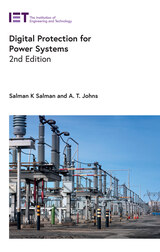
Digital Protection for Power Systems
Salman K. Salman
The Institution of Engineering and Technology, 2022
Electric power systems have become much more complex in the past years, due to the integration of distributed generation including renewable energy sources and the challenges caused by intermittency of renewables. This complexity makes power systems potentially more vulnerable. However, use of computer-based protection methods (i.e., digital protection relays) supported by communication technology have helped in protecting electrical networks from faults to which they are subjected to.
[more]

Human Factors for Engineers
Carl Sandom
The Institution of Engineering and Technology, 2004
This book introduces the reader to the subject of Human Factors and provides practical and pragmatic advice to assist engineers in designing interactive systems that are safer, more secure and easier to use - thereby reducing accidents due to human error, increasing system integrity and enabling more efficient process operations. The book discusses human factors integration methodology and reviews the issues that underpin consideration of key topics such as human error, automation and human reliability assessment. The book also examines design considerations, including control room and interface design, and acceptance and verification considerations.
[more]
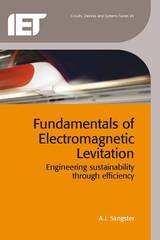
Fundamentals of Electromagnetic Levitation
Engineering sustainability through efficiency
Alan J. Sangster
The Institution of Engineering and Technology, 2012
Electromagnetic levitation is commonly associated with transport applications, principally 'MagLev' trains. However, the technology has many potential applications across engineering, particularly where there is a requirement to improve efficiency of electrical products and devices, propelled by the desire to minimise frictional and bearing losses and ohmic losses in conductors, which are the major causes of machine inefficiency.
[more]
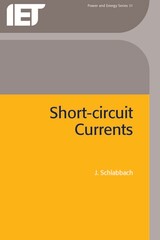
Short-circuit Currents
J. Schlabbach
The Institution of Engineering and Technology, 2005
The calculation of short-circuit currents is a central task for Power System engineers, as they are essential parameters for the design of electrical equipment and installations, the operation of power systems and the analysis of outages and faults.
[more]

Voltage Quality in Electrical Power Systems
J. Schlabbach
The Institution of Engineering and Technology, 2001
Problems of voltage quality and their solutions are becoming increasingly important with the growth in power electronics and the high sensitivity of electronic equipment. Translated and updated from the German original published by VDE-Verlag, this book successfully details the theoretical and practical background to low voltage conducted disturbances including harmonics, voltage fluctuation/flicker and asymmetrical voltages.
[more]

The Development of a Strategy for Integrated Manufacturing Systems
Norman A. Schofield
The Institution of Engineering and Technology, 1990
This Guide is the first produced by The Integrated Manufacturing Systems Working Party of the Institution of Production Engineers. In considering the wide range of issues which arise for any Manufacturing company embarking on the integration of manufacturing systems, the Working Party decided to take a staged approach and this guide represents the first of several on topics relating to Integrated Manufacturing Systems.
[more]
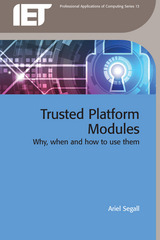
Trusted Platform Modules
Why, when and how to use them
Ariel Segall
The Institution of Engineering and Technology, 2017
Trusted Platform Modules (TPMs) are small, inexpensive chips which provide a limited set of security functions. They are most commonly found as a motherboard component on laptops and desktops aimed at the corporate or government markets, but can also be found on many consumer-grade machines and servers, or purchased as independent components. Their role is to serve as a Root of Trust - a highly trusted component from which we can bootstrap trust in other parts of a system. TPMs are most useful for three kinds of tasks: remotely identifying a machine, or machine authentication; providing hardware protection of secrets, or data protection; and providing verifiable evidence about a machine's state, or attestation.
[more]

Weibull Radar Clutter
Matsuo Sekine
The Institution of Engineering and Technology, 1990
The material presented in this book is intended to provide the reader with a practical treatment of Weibull distribution as applied to radar systems.
[more]
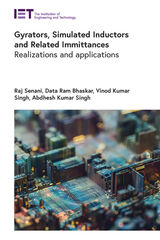
Gyrators, Simulated Inductors and Related Immittances
Realizations and applications
Raj Senani
The Institution of Engineering and Technology, 2020
This book provides comprehensive coverage of the major gyrator circuits, simulated inductors and related synthetic impedances. It offers a thorough review of research in this field to date, and includes an exceptionally wide range and number of circuit examples, along with their relevant design equations, limitations, performance features, advantages and shortcomings. The book provides useful information for academics wishing to keep up-to-date with developments in the design of gyrators and other related synthetic impedances, and can also be used as a reference guide by electronics engineers looking to select appropriate circuits for specific applications.
[more]
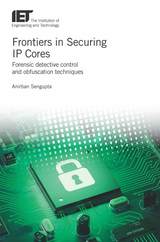
Frontiers in Securing IP Cores
Forensic detective control and obfuscation techniques
Anirban Sengupta
The Institution of Engineering and Technology, 2020
This book presents advanced forensic detective control and obfuscation techniques for securing hardware IP cores by exploring beyond conventional technologies. The theme is important to researchers in various areas of specialization, because it encompasses the overlapping topics of EDA-CAD, hardware design security, VLSI design, IP core protection, optimization using evolutionary computing, system-on-chip design and finally application specific processor/hardware accelerator design for consumer electronics applications.
[more]
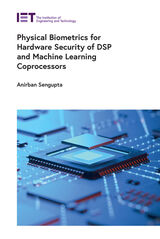
Physical Biometrics for Hardware Security of DSP and Machine Learning Coprocessors
Anirban Sengupta
The Institution of Engineering and Technology, 2023
Physical Biometrics for Hardware Security of DSP and Machine Learning Coprocessors presents state-of-the art explanations for detective control-based security and protection of digital signal processing (DSP) and machine learning coprocessors against hardware threats. Such threats include intellectual property (IP) abuse and misuse, for example, fraudulent claims of IP ownership and IP piracy. DSP coprocessors such as finite impulse response filters, image processing filters, discrete Fourier transform, and JPEG compression hardware are extensively utilized in several real-life applications. Further, machine learning coprocessors such as convolutional neural network (CNN) hardware IP cores play a vital role in several applications such as face recognition, medical imaging, autonomous driving, and biometric authentication, amongst others.
[more]
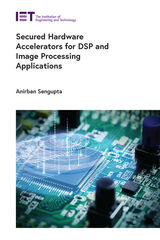
Secured Hardware Accelerators for DSP and Image Processing Applications
Anirban Sengupta
The Institution of Engineering and Technology, 2021
Written by an acknowledged expert in the field, this book focuses on approaches for designing secure hardware accelerators for digital signal processing and image processing, which are also optimised for performance and efficiency. State-of-the art security and optimization algorithms are presented, and their roles in the design of secured hardware accelerators for DSP, multimedia and image processing applications are explored.
[more]
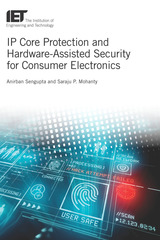
IP Core Protection and Hardware-Assisted Security for Consumer Electronics
Anirban Sengupta
The Institution of Engineering and Technology, 2019
IP Core Protection and Hardware-Assisted Security for Consumer Electronics presents established and novel solutions for security and protection problems related to IP cores (especially those based on DSP/multimedia applications) in consumer electronics. The topic is important to researchers in various areas of specialization, encompassing overlapping topics such as EDA-CAD, hardware design security, VLSI design, IP core protection, optimization using evolutionary computing, system-on-chip design and application specific processor/hardware accelerator design.
[more]

Approximate Boundary Conditions in Electromagnetics
T.B.A. Senior
The Institution of Engineering and Technology, 1995
Non-metallic materials and composites are now commonplace in modern vehicle construction, and the need to compute scattering and other electromagnetic phenomena in the presence of material structures has led to the development of new simulation techniques.
[more]
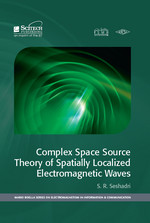
Complex Space Source Theory of Spatially Localized Electromagnetic Waves
S.R. Seshadri
The Institution of Engineering and Technology, 2014
This book begins with an essential background discussion of the many applications and drawbacks for paraxial beams, which is required in the treatment of the complex space theory of spatially localized electromagnetic waves. The author highlights that there is a need obtain exact full-wave solutions that reduce to the paraxial beams in the appropriate limit. Complex Space Source Theory of Spatially Localized Electromagnetic Waves treats the exact full-wave generalizations of all the basic types of paraxial beam solutions. These are developed by the use of Fourier and Bessel transform techniques and the complex space source theory of spatially localized electromagnetic waves is integrated as a branch of Fourier optics. Two major steps in the theory are described as: 1) the systematic derivation of the appropriate virtual source in the complex space that produces the required full wave from the paraxial beam solution and 2) the determination of the actual secondary source in the physical space that is equivalent to the virtual source in the complex space.
[more]
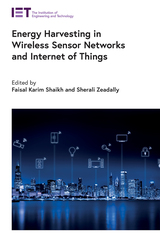
Energy Harvesting in Wireless Sensor Networks and Internet of Things
Faisal Karim Shaikh
The Institution of Engineering and Technology, 2022
The energy efficiency paradigm associated with Wireless Sensor Networks (WSNs) and the Internet of Things (IoT) is a major bottleneck for the development of related technologies. To overcome this limitation, the design and development of efficient and high-performance energy harvesting systems for WSN and IoT environments are being explored.
[more]
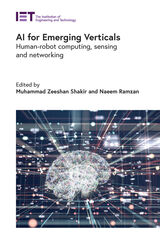
AI for Emerging Verticals
Human-robot computing, sensing and networking
Muhammad Zeeshan Shakir
The Institution of Engineering and Technology, 2021
By specializing in a vertical market, companies can better understand their customers and bring more insight to clients in order to become an integral part of their businesses. This approach requires dedicated tools, which is where artificial intelligence (AI) and machine learning (ML) will play a major role. By adopting AI software and services, businesses can create predictive strategies, enhance their capabilities, better interact with customers, and streamline their business processes.
[more]
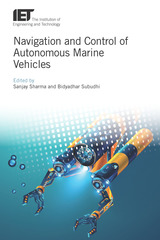
Navigation and Control of Autonomous Marine Vehicles
Sanjay Sharma
The Institution of Engineering and Technology, 2019
Robotic marine vessels can be used for a wide range of purposes, including defence, marine science, offshore energy and hydrographic surveys, and environmental surveys and protection. Such vessels need to meet a variety of criteria: they must be able to operate in salt water, and to communicate and be controlled over large distances, even when submerged or in inclement weather. Further challenges include 3D navigation of individual vehicles, groups or squadrons.
[more]
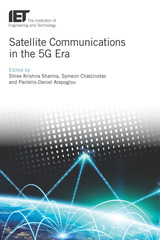
Satellite Communications in the 5G Era
Shree Krishna Sharma
The Institution of Engineering and Technology, 2018
Satellite communications (SatCom) plays a vital role in ensuring seamless access to telecommunications services anytime, and is a viable option for delivering telecommunication services in a wide range of sectors such as aeronautical, military, maritime, rescue and disaster relief. It should be an important component of 5G-and-beyond wireless architectures as it can complement terrestrial telecommunication solutions in various scenarios to provide highly reliable and secure connectivity over a wide geographical area. This book explores promising scenarios for 5G SatCom, novel paradigms for hybrid/integrated satellite-terrestrial integration, and emerging technologies for the next generation of SatCom systems. Topics covered include: Role of SatCom in the 5G Era; 5G satellite use cases and scenarios; SDN-enabled networks, NFV-based scenarios and on-board processing for satellite-terrestrial integration; EHF broadband aeronautical SatCom systems; Next-generation NGSO SatCom systems; Diversity combining and handover techniques for MEO satellites; Non-linear countermeasures for multicarrier satellites; SDN demonstrator for multi-beam satellite precoding; Beam-hopping SatCom systems; Optical on-off keying data links for LEO downlink applications; Ultra-high speed data relay systems; On-board interference detection and localization; Advanced random access schemes for SatCom systems; Interference avoidance, mitigation and dynamic spectrum sharing for hybrid satellite-terrestrial systems; and Two-way satellite relaying.
[more]
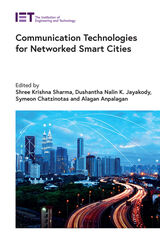
Communication Technologies for Networked Smart Cities
Shree Krishna Sharma
The Institution of Engineering and Technology, 2021
One of the crucial challenges for future smart cities is to devise a citywide network infrastructure capable of effectively guaranteeing resource-efficient and reliable communications while managing the complexity of heterogeneous devices and access technologies. This edited book highlights and showcases state of the art research and innovations in 5G and beyond wireless communications technologies for connected smart cities. The main objectives of this work include the exploration of recent advances and application potentials of various communication technologies as promising enablers for future networked smart cities, the investigation of design-specific issues for the integration of different architectural components of smart cities, and addressing various challenges and identifying opportunities in terms of interoperability of potential solutions.
[more]

Spectral Theory and Excitation of Open Structures
Victor P. Shestopalov
The Institution of Engineering and Technology, 1996
Open resonators, open waveguides and open diffraction gratings are used extensively in modern millimetre and submillimetre technology, spectroscopy and radio engineering. The physical principles of open electrodynamic structures are different from those of closed ones because of radiation loss, edges, multiconnected cross-sections and the need to take into account the behaviour of electromagnetic fields at infinity. The eigenoscillation and eigenwave spectra become complex, there are additional demands on the energy relations and the statements of spectral problems change.
[more]

Wireless Power Transfer Technologies
Theory and technologies
Naoki Shinohara
The Institution of Engineering and Technology, 2024
Wireless Power Transfer (WPT) serves to transfer power from a grid or storage unit to a device without the need for cable connections. This can be performed by induction, as well as by using radio or microwaves.
[more]
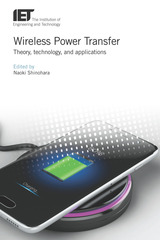
Wireless Power Transfer
Theory, technology, and applications
Naoki Shinohara
The Institution of Engineering and Technology, 2018
Wireless Power Transfer (WPT) enables power to be transferred from a grid or storage unit to a device without the need for cable connections. This can be performed by inductive coupling of magnetic fields as well as by direct radiative transfer via beams of electromagnetic waves, commonly radiowaves, microwaves or lasers. Inductive coupling is the most widely used wireless technology with applications including charging handheld devices, RFID tags, chargers for implantable medical devices, and proposed systems for charging electric vehicles. Applications of radiative power transfer include solar power satellites and wireless powered drone aircraft.
[more]

Electromagnetic Mixing Formulas and Applications
Ari Sihvola
The Institution of Engineering and Technology, 1999
The book discusses homogenisation principles and mixing rules for the determination of the macroscopic dielectric and magnetic properties of different types of media. The effects of structure and anisotropy are discussed in detail, as well as mixtures involving chiral and nonlinear materials. High frequency scattering phenomena and dispersive properties are also discussed.
[more]

How to Communicate in Business
A handbook for engineers
David Silk
The Institution of Engineering and Technology, 1995
This is a practical handbook. Its aim is to help engineers and others with a technical background to communicate effectively with non-technical people. Effective communication is essential for both individual and corporate success in business.
[more]

Microwave Antenna Theory and Design
Samuel Silver
The Institution of Engineering and Technology, 1984
Microwave Antenna Theory and Design is an unabridged reprint of the book published by McGraw Hill, as Volume 12 of the MIT Radiation Laboratory Series in 1949. The Editor of the Volume, the late Professor Samuel Silver, contributed extensively to the text and subsequently became one of the best known people in the world of radio science.
[more]

Key Enablers for User-Centric Advertising Across Next Generation Networks
Jose Simoes
The Institution of Engineering and Technology, 2012
Telecommunication and internet services are constantly subject to change, seeking the customer's full satisfaction. Enriching these services with innovative approaches such as contextaware, social, mobile, adaptable and interactive mechanisms, enables users to experience a variety of personalized services seamlessly across different platforms and technologies. In this sense, advertising is no exception, especially if we consider that it will become the business enabler for next generation services. Nevertheless, currently there is no cross-domain solution capable of delivering real-time advertising across heterogeneous environments or domains, and at the same time, address user needs, desires and intentions. This is because most of the products available today are only used within isolated environments / silos. Therefore, managing advertising campaigns across different verticals is still very complex. However, leveraging on the advances provided by Next Generation Networks, together with the design principles inherent to Service Oriented Architectures and capabilities offered by Service Delivery Platforms, this scenario is about to change. Based on key conceptual entities called enablers, this work aims to change the current scenario. More concretely, this book introduces three distinct but complementary enablers. The Human Enabler provides a real-time context brokerage system capable of securely managing different types of user-related data in a standardized way. The Reasoning Enabler is the result of a welldefined methodology that enables new knowledge to be reasoned, based on previously stored data, by aggregating, correlating and inferring new information about people and their contexts. Lastly, the Session Management Enabler is responsible for abstracting the communication layers. It provides a context-aware multimedia delivery system capable of personalizing and adapting multimedia content according to a set of user and system pre-defined context data or rules, respectively. Altogether, they form the Converged User-Centric Advertising System and introduce new features that address the needs of both users and advertisers.
[more]
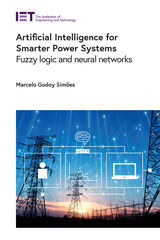
Artificial Intelligence for Smarter Power Systems
Fuzzy logic and neural networks
Marcelo Godoy Simões
The Institution of Engineering and Technology, 2021
The urgent need to reduce carbon emissions is leading to growing use of renewable electricity, particularly from wind and photovoltaics. However, the intermittent nature of these power sources presents challenges to power systems, which need to ensure high and consistent power quality. Going forward, power systems also need to be able to respond to changes in loads, for example from EV charging. Neither production nor load changes can be predicted precisely, and so there is a degree of uncertainty or fuzziness. One way to meet these challenges is to use a kind of artificial intelligence - fuzzy logic.
[more]

Power Electronic Converters and Systems
Applications, Volume 2
Marcelo Godoy Simões
The Institution of Engineering and Technology, 2024
Power electronics is a field of constant evolution. Power grids are seeing developments, and the electrification of the transport sector requires better motor drives. Power electronics plays a key role with new devices such as wide bandgap devices and power converters that convert alternating current into direct current and vice versa, or change the voltage or frequency.
[more]

Power Electronic Converters and Systems
Converters and machine drives, Volume 1
Marcelo Godoy Simões
The Institution of Engineering and Technology, 2024
Power electronics is a field of constant evolution. Power grids are seeing developments, and the electrification of the transport sector requires better motor drives. Power electronics plays a key role with new devices such as wide bandgap devices and power converters that convert alternating current into direct current and vice versa, or change the voltage or frequency.
[more]
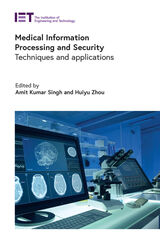
Medical Information Processing and Security
Techniques and applications
Amit Kumar Singh
The Institution of Engineering and Technology, 2022
Smart healthcare systems, made up of advanced wearable devices, internet of things (IoT) technologies and mobile internet connectivity, allow significant medical information to be easily and regularly transmitted over public networks. Personal patient information and clinical records are stored on hospitals and healthcare centres and can be accessed remotely by healthcare workers. Due to the widespread increase in the sheer volume of medical data being collected and created all the time, it has never been more important to ensure that such information is collected, stored and processed in a reliable and secure manner.
[more]
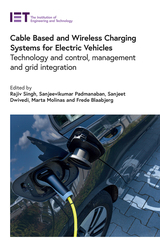
Cable Based and Wireless Charging Systems for Electric Vehicles
Technology and control, management and grid integration
Rajiv Singh
The Institution of Engineering and Technology, 2021
Electric vehicles (EV), are being hailed as part of the solution to reducing urban air pollution and noise, and staving off climate change. Their success hinges on the availability and reliability of fast and efficient charging facilities, both stationary and in-motion. These in turn depend on appropriate integration with the grid, load and outage management, and on the mitigation of loads using renewable energy and storage. Charging management to preserve the battery will also play a key role.
[more]
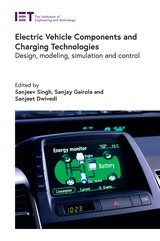
Electric Vehicle Components and Charging Technologies
Design, modeling, simulation and control
Sanjeev Singh
The Institution of Engineering and Technology, 2024
In order to create a reliable, safe and cost-effective electric vehicle with acceptable range, battery charging time, battery life and driving performance, it is important to design optimised and compatible components and charging systems.
[more]
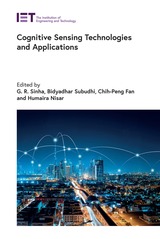
Cognitive Sensing Technologies and Applications
G.R. Sinha
The Institution of Engineering and Technology, 2023
Cognitive sensing systems combined with IoTs and smart technologies are used in countless applications such as industrial robotics, computer-aided diagnosis, brain-computer interface (BCI), human-computer interaction (HCI), telemedicine, driverless cars and smart energy systems.
[more]

Spread Spectrum in Communication
R. Skaug
The Institution of Engineering and Technology, 1985
The book is devoted to advanced radiocommunication, discussing the merits and operational aspects of spread spectrum signalling. Spread spectrum modulation is emerging as one of the most important tools for combatting a wide range of problems usually encountered in radiocommunication. For military applications the signalling is able to resist difficulties deliberately introduced by an enemy, such as jamming and eavesdropping. For civil application, the efficient signal multiplexing and multipath rejection capability is of great interest. The price paid however is the need for very complex processing of the radio signals. This task put great challenges on new technologies and design, and it is only recently that operational systems have started to emerge from the laboratories.
[more]
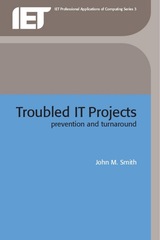
Troubled IT Projects
Prevention and turnaround
John M. Smith
The Institution of Engineering and Technology, 2001
Many IT projects are doomed before the ink is dry on the contract. In this highly readable book, John Smith sets out the 40 root causes of troubled IT projects and explains how these can be avoided at each stage of the project life cycle.
[more]
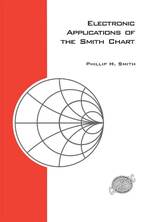
Electronic Applications of the Smith Chart
In waveguide, circuit, and componenet analysis
Phillip H. Smith
The Institution of Engineering and Technology, 1995
This is the second edition of Electronic Applications of the Smith Chart, written by Phillip H. Smith, the originator of the Smith Chart. It covers the history, development and applications of the Smith Chart. This classic reference book describes how the chart is used for designing lumped element and transmission line circuits. The text provides tutorial material on transmission line theory and behavior, circuit representation on the chart, matching networks, network transformations and broadband matching. This edition includes a new chapter with example designs and description of the winSMITH software accessory.
[more]
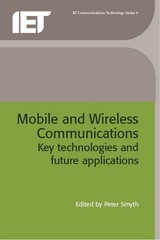
Mobile and Wireless Communications
Key technologies and future applications
Peter Smyth
The Institution of Engineering and Technology, 2004
Two of the fastest growing sectors of communications today are mobile and Internet, both of which have had a profound effect on people's lives. The convergence between these two sectors not only presents great opportunities for the future of 'unplugged' telecommunications but also great challenges in understanding the relative position of different technologies in this future.
[more]

Analogue-digital ASICs
Circuit techniques, design tools and applications
R.S. Soin
The Institution of Engineering and Technology, 1991
The inexorable increase in levels of integration of electronic circuits has most often been exploited using digital signals. So much so that design engineers have sought to digitise analogue signals as early as possible in the signal processing chain, and performed digital processing wherever practicable.
[more]
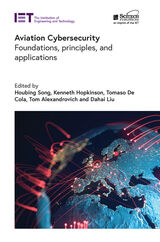
Aviation Cybersecurity
Foundations, principles, and applications
Houbing Song
The Institution of Engineering and Technology, 2022
Aircraft are becoming increasingly reliant on computing and networking technologies, with the advent of the Internet of Things, but this makes them vulnerable to cyber-attacks. This multidisciplinary book is at the cross section of aircraft systems, cybersecurity, and defence technologies. It covers the very latest in defending military and commercial aircraft against cyber-attacks.
[more]
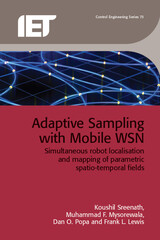
Adaptive Sampling with Mobile WSN
Simultaneous robot localisation and mapping of paramagnetic spatio-temporal fields
Koushil Sreenath
The Institution of Engineering and Technology, 2011
Adaptive Sampling with Mobile WSN develops algorithms for optimal estimation of environmental parametric fields. With a single mobile sensor, several approaches are presented to solve the problem of where to sample next to maximally and simultaneously reduce uncertainty in the field estimate and uncertainty in the localisation of the mobile sensor while respecting the dynamics of the time-varying field and the mobile sensor. A case study of mapping a forest fire is presented. Multiple static and mobile sensors are considered next, and distributed algorithms for adaptive sampling are developed resulting in the Distributed Federated Kalman Filter. However, with multiple resources a possibility of deadlock arises and a matrix-based discrete-event controller is used to implement a deadlock avoidance policy. Deadlock prevention in the presence of shared and routing resources is also considered. Finally, a simultaneous and adaptive localisation strategy is developed to simultaneously localise static and mobile sensors in the WSN in an adaptive manner. Experimental validation of several of these algorithms is discussed throughout the book.
[more]
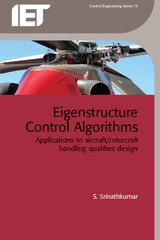
Eigenstructure Control Algorithms
Applications to aircraft/rotorcraft handling qualities design
S. Srinathkumar
The Institution of Engineering and Technology, 2011
Eigenstructure control involves modification of both the eigenvalues and eigenvectors of a system using feedback. Based on this key concept, algorithms are derived for the design of control systems using controller structures such as state feedback, output feedback, observer-based dynamic feedback, implicit and explicit modelfollowing, etc. The simple-to-use algorithms are well suited to evolve practical engineering solutions.
[more]
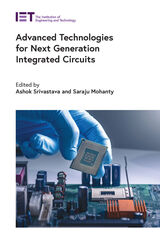
Advanced Technologies for Next Generation Integrated Circuits
Ashok Srivastava
The Institution of Engineering and Technology, 2020
Although existing nanometer CMOS technology is expected to remain dominant for the next decade, new non-classical devices are being developed as the potential replacements of silicon CMOS, in order to meet the ever-present demand for faster, smaller, more efficient integrate circuits.
[more]

Fusion-Fission Hybrid Nuclear Reactors
For enhanced nuclear fuel utilization and radioactive waste reduction
Weston M. Stacey
The Institution of Engineering and Technology, 2022
Nuclear energy is contributing to the long-term solution to stave off climate change. However, current nuclear fission technology accesses only about 1-3% of the nuclear energy content of natural uranium, which is inefficient, and also creates a radioactive waste disposal problem.
[more]
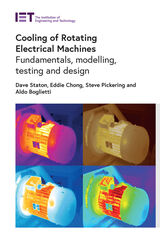
Cooling of Rotating Electrical Machines
Fundamentals, modelling, testing and design
David Staton
The Institution of Engineering and Technology, 2022
Thermal management is an issue with all electrical machines, including electric vehicle drives and wind turbine generators. Excessively high temperatures lead to loss of performance, degradation and deformation of components, and ultimately loss of the system.
[more]
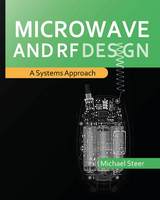
Microwave and RF Design
A Systems Approach
Michael Steer
The Institution of Engineering and Technology, 2010
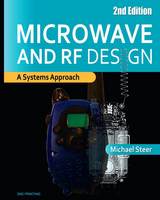
Microwave and RF Design
A Systems Approach, 2nd Edition
Michael Steer
The Institution of Engineering and Technology, 2013
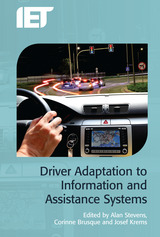
Driver Adaptation to Information and Assistance Systems
Alan Stevens
The Institution of Engineering and Technology, 2013
Driver information and assistance systems have emerged as an integral part of modern road vehicles in order to support the driver while driving. They make use of the newest information technologies in order to enhance driver awareness, safety and comfort, and thereby avoiding driver errors and accidents. Driver Adaptation to Information and Assistance Systems brings together recent work by the Marie-Curie Initial Training Network ADAPTATION. The project has studied drivers' behavioural adaptation to these new technologies from an integrative perspective working under a joint conceptual theoretical framework of behavioural adaptation that can be used to generate research hypotheses about how drivers will adapt to information and assistance systems and to derive guidelines for the design and deployment of such systems.
[more]
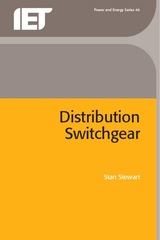
Distribution Switchgear
Stan Stewart
The Institution of Engineering and Technology, 2004
Switchgear plays a fundamental role within the power supply industry. It is required to isolate faulty equipment, divide large networks into sections for repair purposes and reconfigure networks in order to restore power supplies and control other equipment.
[more]
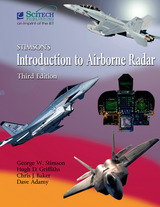
Stimson's Introduction to Airborne Radar
George W. Stimson
The Institution of Engineering and Technology, 2014
Completely modernized, greatly expanded, but retaining all the magic of the 2nd edition, Introduction to Airborne Radar has been brought into the 21st century without losing the hallmarks that made George Stimson's previous editions unique. Every chapter has been updated to reflect the constant transformations in radar technology and end-of-chapter exercises have also been added, improving its employment as a textbook.
[more]
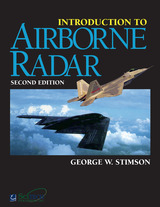
Introduction to Airborne Radar
Geroge W. Stimson
The Institution of Engineering and Technology, 1998
Introduction to Airborne Radar is the revision of the classic book privately published by Hughes Aircraft Company in 1983. Lavishly produced in full color, the book was quite unlike any commercially published radar book produced by the major technical publishers. The combination of clear, understandable writing and the unparalleled illustrations established the text-reference as a 'must-have' for engineers, technicians, pilots, and even sales and marketing people within the radar and aerospace industry. The book was authored by veteran Hughes engineer and Technical Manager George W. Stimson, a publications specialist. Individual chapters were thoroughly reviewed by the appropriate experts within the Hughes Radar Systems Group. The book was initially available 1983-1987 only to those within the Hughes family: employees and customers, primarily the military. Restriction was lifted in 1987. Hughes went through three printings and 40,000 copies 1983-1993, mostly by word-of-mouth testimonials and demand. Upon retirement from Hughes, George Stimson successfully negotiated for the rights to the book and made an agreement with SciTech Publishing to do a major revision of the text to update it. The resulting Second Edition has been overwhelmingly positive and a best-seller. Second Edition The revision is extensive: thirteen entirely new chapters cover the technological advances over the fifteen years since publication, two chapters considered obsolete have been deleted entirely, three chapters are extensively rewritten and updated, two chapters have been given new sections, and fourteen chapters have been given minor tweaks, corrections, and polishing. The book has grown from 32 chapters to 44 chapters in 584 efficiently-designed pages. Efforts have been made to bring more even-handed coverage to radars developed outside of Hughes Aircraft, while older and less important Hughes radars have been deleted or abbreviated. Chapter 44 catalogs many of the cutting edge radars in functioning aircraft and near-service aircraft in early stages of production. The book's appeal is to a diverse audience: from military pilots and radar officers eager to gain a sound technical understanding of the complex systems that their lives depend upon, on up through technicians, marketing, and sales people, to the radar system design specialists, who may 'know all that stuff' but who deeply admire the expression and thus use the book to teach others who have questions. The market encompasses companies directly involved in the radar business and those on the periphery, college professors of engineering and physics themselves, along with students in aviation, aeronautics, and electromagnetics and radar courses. The cross-disciplinary and multi-level demand for the book shows that the book should not be pigeon-holed as just a radar book for electrical engineers. Virtually anybody with a knowledge of high school algebra, trigonometry, and physics will be able to read and absorb most of the material.
[more]
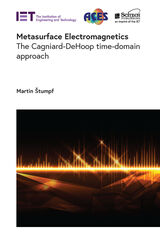
Metasurface Electromagnetics
The Cagniard-DeHoop time-domain approach
Martin Štumpf
The Institution of Engineering and Technology, 2022
The book is entirely dedicated to the exploration of time-domain electromagnetic fields in the presence of thin, high contrast sheets, with an emphasis on metasurfaces combining magnetic and dielectric properties.
[more]
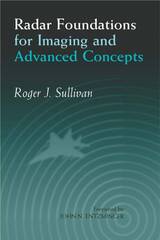
Radar Foundations for Imaging and Advanced Concepts
Roger J. Sullivan
The Institution of Engineering and Technology, 2004
Through courses taught internally at the Institute for Defense Analysis, Dr. Roger Sullivan has devised a book that brings readers fully up to speed on the most essential quantitative aspects of general radar in order to introduce study of the most exciting and relevant applications to radar imaging and advanced concepts: Synthetic Aperture Radar (4 chapters), Space-time Adaptive Processing, moving target indication (MTI), bistatic radar, low probability of intercept (LPI) radar, weather radar, and ground-penetrating radar. Whether you are a radar novice or experienced professional, this is an essential reference that features the theory and practical application of formulas you use in radar design every day. With this book, you are taken step-by-step through the development of modern airborne microwave radar, up to the cutting edge of emergent technologies including new results on theoretical 2D and 3D SAR point-spread functions (PSF) and current discussions concerning dechirp/deskew processing, layover in SAR images, vibrating targets, foliage penetration, image quality parameters, and more. Plus, for students of electrical engineering, physics, and radar, this book provides the best source of basic airborne radar understanding, as well as a broad introduction to the field of radar imaging.
[more]
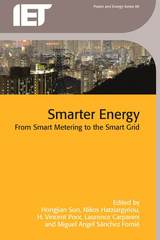
Smarter Energy
From smart metering to the smart grid
Hongjian Sun
The Institution of Engineering and Technology, 2016
This book presents cutting-edge perspectives and research results in smart energy spanning multiple disciplines across four main topics: smart metering, smart grid modeling, control and optimization, and smart grid communications and networking.
[more]

Design of High Frequency Integrated Analogue Filters
Yichuang Sun
The Institution of Engineering and Technology, 2002
Analogue filters will always be needed for interfacing between digital systems and the 'real' analogue world. In fact, the high frequency integrated analogue filter has become a key component in achieving ubiquitous communication and computing. In recent years, the renewed interest in analogue, mixed-signal and RF circuits due to the need for system-on-chip design and the market for wireless communications has led to a new peak of research into high frequency integrated analogue filters.
[more]
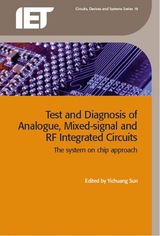
Test and Diagnosis of Analogue, Mixed-signal and RF Integrated Circuits
The system on chip approach
Yichuang Sun
The Institution of Engineering and Technology, 2008
Systems on Chip (SoC) for communications, multimedia and computer applications have recently received much international attention; one such example being the single-chip transceiver. Modern microelectronic design adopts a mixed-signal approach as a complex SoC is a mixed-signal system including both analogue and digital circuits. Automatic testing becomes crucially important to drive down the overall cost of next generation SoC devices. Test and fault diagnosis of analogue, mixed-signal and RF circuits, however, proves much more difficult than that of digital circuits due to tolerances, parasitics and nonlinearities and therefore, together with challenging tuning and calibration, remains the bottleneck for automatic SoC testing. This book provides a comprehensive discussion of automatic testing, diagnosis and tuning of analogue, mixed-signal and RF integrated circuits, and systems in a single source. The book contains eleven chapters written by leading researchers worldwide. As well as fundamental concepts and techniques, the book reports systematically the state of the arts and future research directions of these areas. A complete range of circuit components are covered and test issues are also addressed from the SoC perspective. An essential reference companion to researchers and engineers in mixed-signal testing, the book can also be used as a text for postgraduate and senior undergraduate students.
[more]
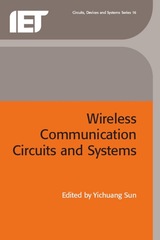
Wireless Communications Circuits and Systems
Yichuang Sun
The Institution of Engineering and Technology, 2004
This book presents a state of the art review of integrated circuits, systems and transceivers for wireless and mobile communications. Contributions from world-class researchers focus upon the most recent developments in key RF, IF and baseband components and subsystems and transceiver architecture in CMOS technology. Adopting a top-down approach from wireless communications systems, mobile terminals and transceivers, to constituent components, this book covers the whole range of baseband, IF and RF issues in a systematic way. Circuit and system techniques for design and implementation of reconfigurable low voltage and low power single-chip CMOS transceivers for both mobile cellular and wireless LAN applications are included.
[more]
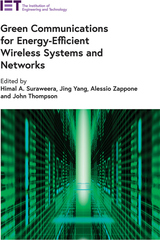
Green Communications for Energy-Efficient Wireless Systems and Networks
Himal A. Suraweera
The Institution of Engineering and Technology, 2021
The ICT industry is a major consumer of global energy. The energy crisis, global warming problems, dramatic growth in data traffic and the increased complexity of emerging networks are pushing academic and industry research towards the development of energy-saving and energy-efficient architectures, technologies and networks in order to reduce the carbon footprint while ensuring efficient and reliable communication networks, and environmental sustainability. Attractive solutions for the design and implementation of energy efficient wireless networks and 5G technologies include massive MIMO, non-orthogonal multiple access, and energy harvesting communications. Tools from areas such as machine and deep learning are being investigated to establish optimal approaches and understand fundamental limits. Moreover, new promising heterogeneous and decentralized network architectures and the Internet-of-Things (IoT) will have an impact on the successful implementation of future and next generation green wireless communications.
[more]
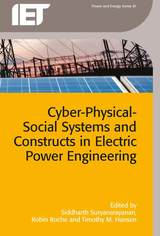
Cyber-Physical-Social Systems and Constructs in Electric Power Engineering
Siddharth Suryanarayanan
The Institution of Engineering and Technology, 2016
Cyber-physical-social systems (CPSS) integrate computing, physical assets, and human networks. Divided into four application areas to the electric grid, this book describes state-of-the-art CPSS in electric power systems, including detailed approaches on social constructs which are a critical aspect of the end-user realm. The book covers:
[more]
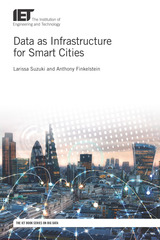
Data as Infrastructure for Smart Cities
Larissa Suzuki
The Institution of Engineering and Technology, 2019
This book describes how smart cities can be designed with data at their heart, moving from a broad vision to a consistent city-wide collaborative configuration of activities. The authors present a comprehensive framework of techniques to help decision makers in cities analyse their business strategies, design data infrastructures to support these activities, understand stakeholders' expectations, and translate this analysis into a competitive strategy for creating a smart city data infrastructure. Readers can take advantage of unprecedented insights into how cities and infrastructures function and be ready to overcome complex challenges. The framework presented in this book has guided the design of several urban platforms in the European Union and the design of the City Data Strategy of the Mayor of London, UK.
[more]
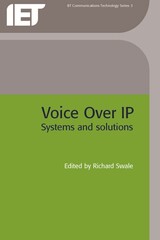
Voice Over IP (Internet Protocol)
Systems and solutions
Richard Swale
The Institution of Engineering and Technology, 2001
Voice over Internet Protocol (VoIP) has recently evolved from a simple capability for transporting voice communications into a much more powerful technology capable of changing the way voice applications are constructed, delivered, marketed and sold. Whilst VoIP has clearly provided a focus for much debate within the telecommunications industry, there has been a clear gulf between hype and reality. However the questions now being asked have migrated from 'Will it work?' to 'What will the industry look like when it is delivered at scale?'
[more]

Technical History of the Beginnings of Radar
S.S. Swords
The Institution of Engineering and Technology, 1986
Radar has become an essential factor in air and sea travel, has affected all areas of military science and, most important of all perhaps, has considerably influenced the progress of electronic engineering.
[more]
READERS
Browse our collection.
PUBLISHERS
See BiblioVault's publisher services.
STUDENT SERVICES
Files for college accessibility offices.
UChicago Accessibility Resources
home | accessibility | search | about | contact us
BiblioVault ® 2001 - 2024
The University of Chicago Press









